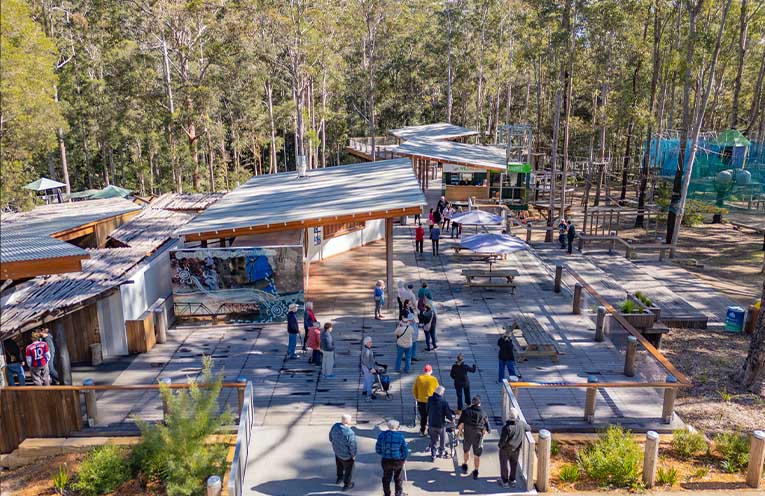GUULABAA – Place of Koala, the world’s first purpose-built wild koala breeding and visitor centre, has been recognised with a major honour at the 2025 Australian Good Design Awards.
The forest-based tourism precinct in the Cowarra State Forest took out the Australian Good Design Award Winner accolade in the Built Environment category.
Presented by Good Design Australia, the Awards are among the world’s longest-running and most respected international design programs, celebrating projects that exemplify design excellence, innovation and impact.
This year’s theme, “Design for Better”, highlights how design can shape a more balanced, inclusive and sustainable world.
Developed by the Forestry Corporation of NSW and designed by global architecture and design firm Gensler, Guulabaa was conceived in the aftermath of the 2019–2020 Black Summer bushfires as a model for ecological restoration and resilient design.
Located on Birpai Country, the project was co-created with First Nations partners and local communities to support the long-term recovery of koala populations while fostering a deeper connection between people, wildlife and Country.
“Our approach was grounded in ‘Designing with Country’, guided by the voices of Traditional Owners and community partners who shaped the project’s purpose and form,” Gensler Australia Managing Director Lisa Munao said.
The Good Design Awards jury commended Guulabaa as a “novel typology that explores the space between visitor centre, community platform and interpretation space”.
The jury praised the project for its deep and genuine partnerships with Indigenous leaders, government, and community, and for flipping the script on how people can view wildlife.
“Particularly compelling is the project’s impact in strengthening regional identity and increasing eco-tourism,” the jury added.
Forestry Corporation of NSW’s Senior Manager Country and Community, Kathy Lyons said, “Guulabaa is about design for the betterment of people, wildlife and Country.
“We’re proud to see this project recognised on the national stage as a symbol of what’s possible when we combine Indigenous knowledge, design innovation, and a shared responsibility to care for the environment.”



